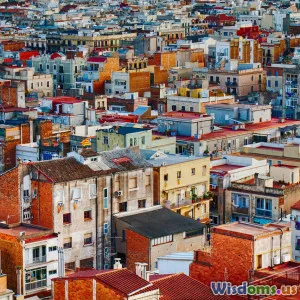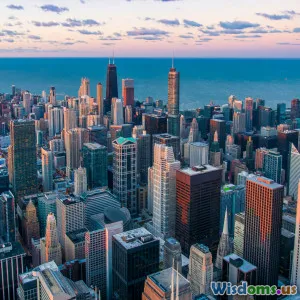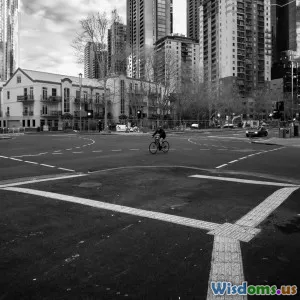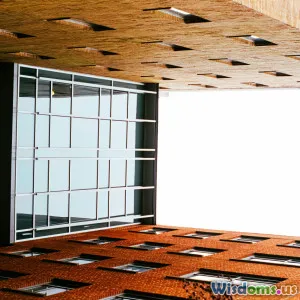
Why Mixed Use Zoning Transforms Urban Communities Fast
13 min read Discover how mixed use zoning rapidly revitalizes urban communities, enhances vibrancy, promotes economic growth, and fosters social sustainability with real-world examples and actionable insights. (0 Reviews)
Why Mixed Use Zoning Transforms Urban Communities Fast
Introduction: Urban Alchemy—The Power of Mixed Use Zoning
Can a simple change in zoning law transform an entire city block or neighborhood? If you stroll through New York’s SoHo, Toronto’s Distillery District, or Barcelona’s El Born, you’ll see cafe-goers, laughter, cycling commuters, and boutique shoppers mingling side by side. But they share more than picturesque streets. They are products of one urban planning secret: mixed use zoning. Once homes were neatly separated from shops, schools, and workplaces. Today, trendsetting cities worldwide break down these barriers, blending building uses for rapid socio-economic and cultural revival.
But why does mixed use zoning spark transformation almost overnight? And why are more cities adopting this approach to conquer the stagnation and monotony left by traditional single-use zoning? Read on for a deep dive into the mechanics, magic, and proven outcomes of mixed use zoning on urban communities.
The Traditional Model: Lessons From Single Use Zoning
The Insular Neighborhood Problem
Single use—or "Euclidean" zoning—still defines much of urban America and beyond. In these plans, residential, commercial, industrial, and institutional structures are cordoned off, yielding neighborhoods of homes-only, or bland commercial strips.
Example: Suburbs built post-WWII in the United States demarcated vast tracts for single uses. Bedroom communities emerged, sleepy by day and dependent on lengthy car commutes for work, shopping, and leisure. The commute-centric structure isolated residents and hollowed out local economies.
Consequences of Separation
This old-school model causes:
- Ghost-town vibes after business hours
- Empty sidewalks, car-clogged streets
- Reduced walkability and accessibility
- Limited economic resilience to shocks
“Single-use zoning is the single most environmentally and socially destructive force in North America,” urban theorist James Howard Kunstler famously argued. As urban populations grew and needs evolved, planners searched for solutions—and found them in the potent blend of mixed use zoning.
What is Mixed Use Zoning?
Definition and Core Principles
Mixed use zoning allows for multiple functional uses—residential, commercial, cultural, institutional—within the same area or building. Instead of cordoning off structures by their use, cities designate blocks or corridors where apartments rise above shops, co-working spaces neighbor libraries, and urban agriculture shares blocks with art studios or gyms.
Forms of Mixed Use Zoning
- Horizontal Mixed Use: Different buildings on the same block serve different functions (cafes, housing, offices).
- Vertical Mixed Use: Single buildings combine activities, like ground-floor retail with offices above and apartments on higher levels.
- Live-Work Units: Residents operate businesses from their homes or communal spaces, as seen in retrofitted warehouses.
Fact: Mixed use is not new. Historic European cities thrived by mixing trades, inns, and dwellings, with streetscapes bustling both day and night.
Why Mixed Use Zoning Accelerates Urban Transformation
1. Speeds Up Economic Growth and Diversity
As soon as restrictions lift, storefronts, restaurants, and co-working hubs materialize alongside residential spaces. Developers rush to take advantage of high-demand, high-diversity areas. Cities see more local businesses, job opportunities, and tax revenue.
Case Study: Portland, Oregon’s Pearl District—in the 1990s a run-down warehouse zone—transformed into a vibrant urban ecosystem after zoning revisions. Today it boasts boutiques, parks, tech offices, apartments, and public art. Property values soared by 321% from 1999 to 2015 (City of Portland data). Mixed use has attracted entrepreneurs, major corporations, and a year-round customer base.
2. Rapid Urban Revitalization of Dead Zones
Dead malls, abandoned waterfronts, and empty corridors experience radical renewal under mixed use zoning. Developers and entrepreneurs can rapidly retrofit spaces for new functions, breathing life into once-derelict areas.
Example: The High Line in New York City replaced a disused elevated rail line with public park space, combined with mixed use regulations. Shops, luxury condos, galleries, and offices followed, turning Chelsea’s urban void into a global landmark of urban renewal, generating nearly $1 billion in new economic activity by 2015.
3. Generates Round-the-Clock Activity
Single-use areas often fluctuate: downtown is dead at night; residential areas are empty all day. But mixed use fosters a steady pulse: morning commuters grab coffee at streetside cafes, kids spill into parks after school, and nightlife animates corners well into the evening.
With more "eyes on the street," as championed by urbanist Jane Jacobs, crime rates drop and residents feel safer; community ties strengthen through repeated daily contacts.
4. Encourages Sustainable Urban Mobility
Bleak car-dependent cities are losing ground to pedestrian-friendly, bikeable zones. Mixed use communities enable the “15-minute city” model: residents can live, shop, work, and relax within a short walk or ride.
Statistic: According to a 2019 National Association of Realtors study, 53% of respondents favored walkable communities with mixed use development.
Novel Insight: As urbanist Jeff Speck highlights, walkability fuels further development, making it a "virtuous cycle." Once walkable communities form, more shops, amenities, and residences want to cluster, compounding transformation speed.
5. Builds Social Resilience and Community Ties
When neighbors frequently encounter each other—in shared parks, lively plazas, through shopfronts, or local events—a sense of belonging and ownership grows.
Real-World Example: In Tokyo’s mixed use neighborhoods—like Shimokitazawa—the surge of local eateries, jazz bars, apartment buildings, and theaters create an eclectic sense of place. Residents pride themselves on their neighborhood’s diversity and vibrance.
Data Point: Researchers from the Lincoln Institute found that residences in mixed use zones scored 22% higher on measures of social cohesion and sense of belonging than single-use-zoned counterparts.
6. Mitigates Urban Inequality
Old zoning laws inadvertently encouraged economic and racial segregation. Mixed use zoning, if thoughtfully implemented, allows for affordable housing alongside market-rate homes, boutique businesses beside chains, and shared public amenities, expanding opportunity.
Quote: “Mixed use isn’t a panacea for affordability, but it’s an essential tool in cities’ equity toolbox,” says Dr. Lisa Bates, urban planning professor at Portland State University.
7. Adapts Quickly to Shifting Needs
During crises—like the COVID-19 pandemic—areas with flexible zoning could quickly pivot shuttered retail into pop-up clinics, outdoor patios, or essential supply centers. Cities like Melbourne and Toronto used rapid re-permitting to help businesses adjust, ensuring resilience and maintaining neighborhood vibrancy.
Overcoming the Challenges
Despite widespread success, mixed use zoning encounters obstacles:
- Community Pushback: Residents sometimes fear disruptive change—overcrowding, noise, gentrification.
- Financing Gaps: Banks and investors may hesitate to fund unfamiliar mixed use projects.
- Complex Planning: Coordinating diverse uses demands smarter urban design, updated infrastructure, and collaboration.
Yet, cities that address these issues through affordable housing mandates, strong community engagement, and forward-thinking transportation projects seed fast, transformational results. For instance, Vancouver’s False Creek district melds affordability with architectural design, drawing global acclaim for inclusiveness and speed.
Real-World Success Stories: Fast-Track Urban Renaissance
The Pearl District, Portland
Once neglected, it’s now Portland’s living room—a model of city-led rezoning empowering mixed use developers. Small startups coexist with tech giants, rooftop community gardens mix with third-wave coffee shops, and parks invite year-round play.
London’s King’s Cross
The 67-acre site surrounding King’s Cross station languished until a mixed use masterplan introduced offices, universities, culinary markets, cultural institutions, and homes. Within a decade, King’s Cross evolved from industrial relic to a showcase for urban innovation, drawing Google’s European HQ and over 93 new businesses since 2010.
Barcelona’s Superblocks
The “superilles” reorganized road networks to favor pedestrians and maximize utility of public and private spaces for homes, commerce, and leisure. The result? Traffic dropped 60-80% within superblocks, air quality improved, ground-floor retail exploded, and community-led events now animate the city’s once traffic-choked arteries.
Toronto’s Distillery District
Factories once sat abandoned; after rezoning and reclamation, this neighborhood features art galleries, microbreweries, and eclectic apartment lofts. Locals and tourists mingle in repeated festivals, drawn by the seamless live/work/play rhythm forged by flexible mixed use.
The Future: Mixed Use as the Urban Default
Forward-thinking cities view mixed use zoning less as an experiment and more as a vital urban foundation. Already, pandemic-era shifts toward remote work, climate threats, and evolving cultural norms demand nimble, sustainable, and engaging downtowns. Genuine success, however, depends on purposeful planning:
- Equity-oriented policies—Encouraging affordable units alongside market-rate builds.
- Transit investment—Optimizing walkability, biking, and sustainable transit instead of car-dominated infrastructure.
- Community engagement—Involving neighbors in visioning and design from the earliest stages to ensure roots take hold and authenticity flourishes.
Conclusion: Action Steps for Catalyzing Fast Urban Renewal
Mixed use zoning isn’t magic—it’s a proven, powerful catalyst that removes barriers, reinvigorates dead zones, and births cities where people meet, live, create, and thrive together. For city leaders, developers, business owners, and residents, embracing and fine-tuning this approach offers a clear path to resilience, vibrancy, and long-term prosperity. The history, research, and lived experience from the world’s most dynamic cities all point to one truth: when districts mix it up, they transform—fast.
What can you do?
- Join local advocacy for mixed use plans in your city.
- Support inclusive neighborhood development initiatives.
- Attend city council meetings about zoning reform.
- Demand zoning codes that center sustainability, equity, and community wellbeing.
Cities are at their best when they never stop changing—and it’s time to unlock that speed, together.
Rate the Post
User Reviews
Popular Posts


















